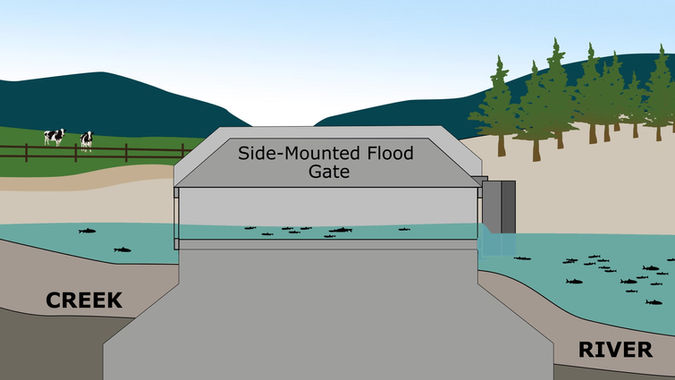top of page
THE PROBLEM
Much of the flood control infrastructure in the Lower Mainland is aging and outdated, putting communities at increased risk of flooding. Many of these structures prevent juvenile salmon from moving between rivers and oceans to the sloughs and streams where they rely on for food, shelter, and rest at this vulnerable life stage. Across the region, 186 pieces of flood infrastructure block over 1,700 km of salmon habitat.
Fortunately, fish-friendlier flood control solutions are emerging. To learn about what works — and what doesn’t — check out our animated explainer videos, created in collaboration with Watershed Watch Salmon Society. Want access to these animations - let us know.
Flood Infrastructure Animations
Flood Infrastructure Animations

Search video...

TOP MOUNTED GATE
00:30

SIDE MOUNTED GATE
00:30

VERTICAL SLUICE GATE
00:30

SELF-REGULATED GATE
00:30
This work was created in collaboration between Watershed Watch Salmon Society and Resilient Waters. It was begun by volunteer animation creators, Nathan Ross and Paul Pajot and finished by Kerel Alaas, as well as many advisors who provided feedback during its development.
Nathan Ross is a landscape architect who was studying at UBC School of Architecture and Landscape Architecture's Coastal Adaptation Lab who helped to kick off the original design.
Paul Pajot (@paul_pajot) is a visual communication designer and founder of @coucou_design, a design studio based in London, England and helps organizations bring ideas to life from space to screens.
Kerel Alaas is a Vancouver based animator and ECUAD graduate who grew up among turkic nomads in Siberia. Alaas' role was funded through the Canada Summer Jobs Program (via Watershed Watch Salmon Society).
bottom of page
